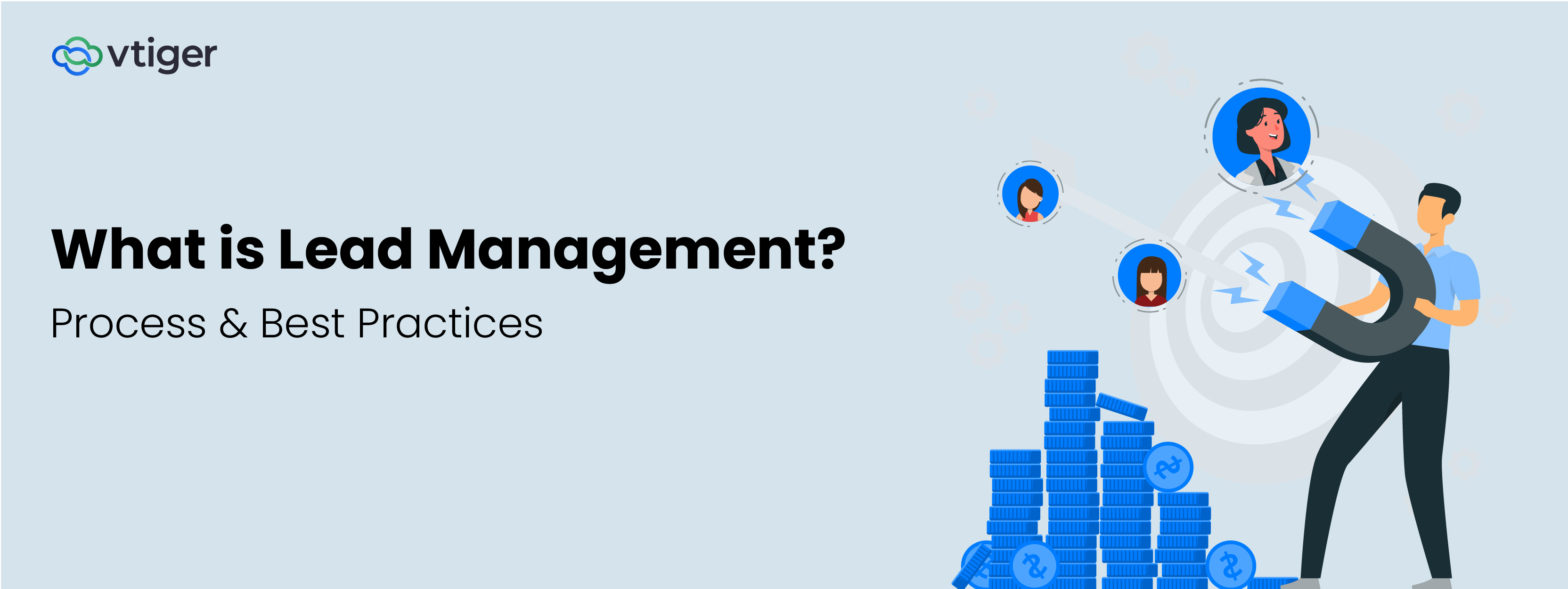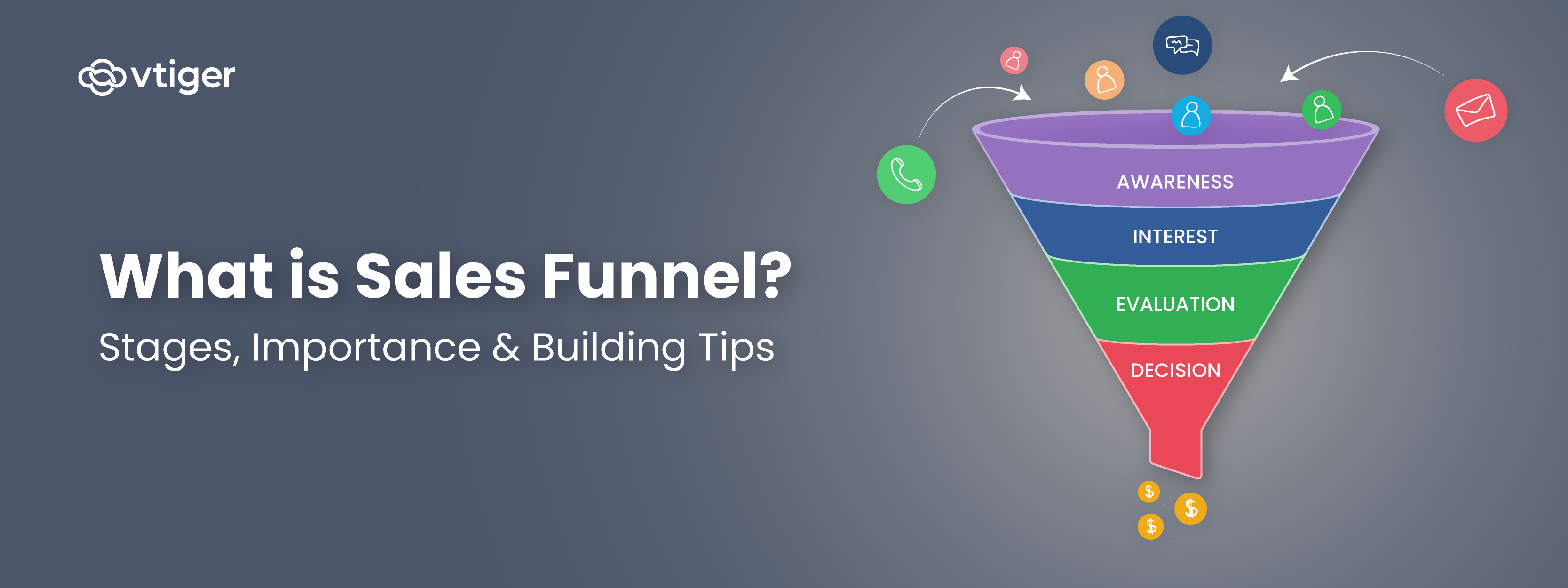Lead management is the process of capturing, tracking, qualifying, routing, and nurturing prospective buyers, referred to as leads, until they are prepared to buy. Imagine it as a systematic process to make certain that no ready prospect slips through the cracks and every prospective buyer receives the correct attention at the correct moment.
Why is Lead Management Important?
Picture having a business where you have lots of interested individuals, but you don’t know who they are, how they found you, or what they are looking for. Without a lead management process, you could lose good opportunities, squander marketing efforts, and miss out on sales. A well-defined lead management system enables you to:
- Capture every interested prospect
- Follow their path and activity
- Qualify who is most likely to buy
- Assign leads to the appropriate salespeople
- Nurture relationships until leads are ready to convert
The payoff? Increased conversion rates, improved customer experiences, and enhanced sales performance
Lead Management Process: Step-by-Step Breakdown
Effective lead management is important for converting prospects into long-term customers. A systematic lead management process prevents any opportunity from slipping away and enables sales teams to concentrate on the most viable prospects. Let’s dissect the most important steps involved in an effective lead management process.
Lead Capturing
The initial stage of lead management is lead capturing. This captures the contact details and related information from interested prospects for your product or service. Lead capturing can occur via different channels like website forms, social media, webinars, or events. The objective is to collect sufficient information for establishing meaningful communication without overwhelming the prospect.
Utilizing tools such as landing pages with simple calls-to-action or chatbots can make this step more efficient, allowing the capturing of leads more quickly and accurately.
Lead Tracking
After leads have been captured, comes lead tracking. Lead tracking records every interaction a prospect has with your business.. Lead tracking informs you as to where the lead stands on the buyer journey and what it has done, e.g. downloading a piece of content, opening an email, or landing on a specific web page.
CRM systems are invaluable because they bring data together and give real-time feedback. Good tracking prevents a lead from falling through the cracks and gives your sales staff the context required to interact effectively with prospects.
Lead Qualification
Not all leads are equal. Lead qualification is the act of analyzing leads to assess their readiness to purchase and alignment with your perfect customer profile. This process saves time and resources by concentrating efforts on leads that are likely to convert.
Qualification criteria usually involves considerations such as budget, authority, need, and timeline. Automated scoring or even manual evaluation by the sales team is used to prioritize leads so that high-value prospects are attended to promptly.
Lead Distribution
Once qualified, leads are distributed. That means qualified leads are given to the right salespeople depending on the expertise, workload, or any other specifications. Effective distribution makes sure that leads are addressed in a timely manner and prioritized correctly. This raises the potential for their conversion.
Lead Nurturing
Lastly, lead nurturing is all about relationship building with leads that are not yet ready to purchase. Through individualized communication, sales people can steer their prospects towards the final decision.
Nurturing converts cold leads into warm leads by answering questions, dispelling objections, and delivering value at each point in the buyer’s process.
By executing these steps—capturing, tracking, qualifying, distributing, and nurturing—you create an efficient lead management process that gets the best out of your sales potential and accelerates business growth.
Best Practices for Lead Management
Lead management is more than following steps—lead management demands embracing best practices that maximize your process and improve conversion rates. Below are some tested strategies to improve your lead management.
Develop a Systematic Approach
A structured method to manage leads provides consistency and effectiveness. Set clear procedures for capturing, monitoring, qualifying, and developing leads. Write down workflows and leverage technology such as CRM tools to automate mundane tasks. This eliminates mistakes and accelerates response times, keeping your team on track and focused.
Prequalify Leads Early
Prequalifying prospects early saves your valuable time and resources. Setting criteria early in the process means you can remove leads that aren’t a fit for your ideal customer or are not yet ready to engage. Early qualification gives your sales staff the ability to focus on high-potential prospects, creating a better opportunity for successful conversion.
Align Your Sales Process and Sales Cycle
Your lead management should closely follow your sales process and sales cycle. Learn the common path your customers follow—from beginning interest to last purchase—and make adjustments to lead handling accordingly. Aligning like this assists in getting the proper message at the proper time, enhances engagement and reduces sales cycles.
Tailor Strategies to Different Stages
Leads at various stages need different strategies. Align your strategies to where a lead is in the buyer’s journey. For early-stage leads, educate and raise awareness. For leads near the point of buying, offer product information in depth and personalized offers. Personalizing your strategy enhances relevance and trust.
Use Clean Data
Clean data is essential to successful lead management. Update and validate lead information on a regular basis to eliminate duplicates, inaccuracies, or obsolete contacts. Clean data enhances the accuracy of lead scoring, segmentation, and communication so that your team has dependable information to work with.
Pre-frame Interactions
Pre-framing interactions means setting clear expectations before engaging with leads. Whether it’s a call, email, or meeting, let prospects know the purpose and value of the interaction. This approach builds transparency and prepares leads to participate actively, making conversations more productive.
Follow Up Consistently But Not Intrusively
Follow-up consistently is the key to developing leads, but you need to balance persistence with respect. Create a follow-up plan that keeps you at the top of prospects’ minds without bombarding them. Employ personalized messages and alternate communication channels to keep prospects engaged without being obtrusive.
Foster Collaboration Between Marketing and Sales
Last but not least, effective collaboration among marketing and sales teams boosts lead management success. Marketing creates and develops leads, and sales qualifies them. Consistent communication and common goals enable seamless lead handoffs, aligned messaging, and a cohesive customer experience.
Avoid Common Pitfalls
Be mindful of common lead management pitfalls such as neglecting lead follow-up, relying too heavily on automation without human touch, or failing to update lead data regularly.
Avoiding these mistakes helps maintain a healthy pipeline and ensures your lead management process remains effective and responsive.
Important Lead Management KPIs
You should measure the appropriate Key Performance Indicators (KPIs) to know the performance of your lead management process. Monitoring them will enable you to see areas of strength, discover bottlenecks, and make informed decisions to enhance your sales results. Below are some of the critical KPIs to track.
Leads to SQL (Sales Qualified Lead) Conversion Rate
This KPI measures the percentage of raw leads that become Sales Qualified Leads. It indicates how effectively your qualification process identifies high-potential prospects. A high rate shows your team is filtering leads well, while a low rate suggests refining your qualification criteria might be needed.
Lead Conversion Rate or Lead-to-Sale Conversion Rate
This metric indicates the rate at which leads turn into paying clients. It indicates the overall efficiency of your sales and nurturing efforts. Maximizing this rate entails refining follow-ups, interactions, and closing techniques to lower drop-offs.
Sales Cycle Optimization
Sales cycle duration measures how long it takes a lead to convert from initial contact to close. Shortening this cycle increases revenue velocity. Monitoring this KPI helps identify delays, enabling targeted improvements like faster follow-ups or better qualification to accelerate conversions.
Top 6 Lead Management Tools & Technologies
Choosing the appropriate tools for your lead management process can significantly enhance your conversion rates and optimize your sales process. As we continue in 2025, a number of technologies are particularly well-suited to businesses that want to refine their lead management. Let’s discuss the necessary tools that can revolutionize your approach.
Customer Relationship Management (CRM) Software
CRM software consolidates lead information and monitors interactions, providing you with a complete picture of your sales pipeline. These applications leverage AI to prioritize leads, provide a customized workspace for reps, and link all touchpoints for quicker, smarter lead conversion.
Real-time Sales Data & Analytics Tools
Real-time analytics tools provide immediate insights into lead behavior and sales performance, helping teams make quick, data-driven decisions to optimize conversion rates.
Sales Enablement Tools
Sales enablement tools provide resources like content management and training to help reps engage leads effectively. They help streamline communication, organize sales pipelines visually, and keep CRM data accessible and user-friendly.
Engagement Tools
Engagement tools ensure timely, multi-channel communication with leads.They often include AI-driven chatbots and automated call monitoring systems to maintain consistent contact without requiring manual effort, ensuring leads are engaged around the clock.
Lead Nurturing Tools
Lead nurturing software sends targeted content to bring prospects closer to the point of purchase. These tools keep lead information updated and enable custom automation workflows for timely, personalized follow-ups—often without the need for coding.
Marketing Automation Platforms
Marketing automation automates campaigns and personalizes messages at scale. By integrating marketing with lead management, they enable targeted campaigns, lead scoring, and real-time feedback collection through AI-powered analytics, driving higher-quality lead generation and engagement.
Implementing these tools into your lead management strategy will enable you to capture, cultivate, and convert leads more effectively in 2025 and beyond.
How to choose the Right Lead Management Tools?
Choosing the appropriate lead management solution can greatly influence your business growth and sales success. Here is how to consider and pick the ideal lead management solution for your business requirements.
Ease of Use
An easily adoptable interface increases usage. Aim for simple dashboards, intuitive navigation, and mobile support. Salesforce and HubSpot are regarded for being easy to use, easing your team into action without frustration.
Integrations
Your tool must integrate perfectly with your current systems. Look for native integrations into your CRM, marketing platforms, and email tools. Strong APIs and pre-built connectors, such as provided by LeadSquared, avoid data silos and simplify workflows.
Customization
Your sales process is different, so select software that allows for customization. Find features such as adjustable workflows, customized fields, and personalized dashboards.
Lead Scoring and Qualification
Successful scoring gives top priority to high-potential leads. Make sure the software provides customizable scoring models based on your requirements. AI-driven solutions like Freshworks CRM automatically score prospects, so your team can concentrate on the best opportunities.
Lead Nurturing Features
Personalized, consistent communication is the way to go. Select tools with automated follow-ups, email sequences, and activity tracking. Drip campaigns and segmentation, as in LeadSquared, enhance engagement and drive conversions.
Cost and Value
Carefully compare pricing plans and features. Prioritize ROI—occasionally a more expensive tool provides superior results. Opt for scalable plans that expand with your business, so you receive maximum value as your needs change.
How did Companies Improve Sales Conversions with Lead Management?
Companies have increased sales conversions by embracing effective lead management practices paired with the latest technology. For instance, Callbox, a global B2B lead generation company, employs an omnichannel, account-based marketing strategy to engage with major decision-makers using tailored campaigns. By applying data and intent signals, they identify high-potential leads and prioritize them, which yields more qualified opportunities and better conversion rates.
B2B SaaS businesses also thrive by prioritizing lead quality rather than quantity. By using content marketing, webinars, and AI-driven lead scoring, they inform prospects and identify the most likely to convert. This focused nurturing enhances conversion rates and maximizes sales efforts by concentrating on potential leads.
Want to optimize your lead management?
Looking to streamline your lead management and increase your sales? An efficient lead management process enables you to target the right leads, tailor your outreach, and close more deals. By consolidating your lead data, logging every interaction, and applying lead scoring to maximize follow-ups, you keep your team focused on leads with the highest likelihood of conversion. Automation software keeps your pipeline running smoothly and your sales team synchronized. Ready to convert more leads into loyal customers? Click here
Conclusion
Implementing strategic lead management processes has proven to significantly improve sales conversions. By focusing on stage optimization, prioritizing engagement, leveraging automation, and centralizing data, businesses can transform their sales outcomes. As we move forward in 2025, refining these strategies will be key to success, ensuring seamless processes that turn prospects into loyal customers.
FAQs
What is lead management in CRM?
Lead management in CRM is the process of capturing, tracking, nurturing, and converting potential customers (leads) into paying customers, all within a centralized system to streamline and optimize sales efforts.
What are the key stages of lead management?
The key stages are:
- Lead capture (collecting lead information)
- Lead qualification (assessing readiness and potential)
- Lead tracking (monitoring interactions and engagement)
- Lead nurturing (building relationships and providing relevant information)
- Lead conversion (turning leads into customers)
How do companies benefit from lead management?
Companies benefit through improved sales efficiency, better resource allocation, more accurate sales forecasting, enhanced customer relationships, and increased conversion rates, often resulting in higher revenue.
What tools are best for lead management?
Best lead management tools focus on key functions: CRM software (centralizes lead data), sales prospecting tools (identify/qualify leads), email marketing (automates outreach), collaboration tools (align teams), automation tools (streamline tasks), lead capture tools (track sources), scoring tools (AI prioritization), sales enablement (resources/training), analytics (real-time insights), and nurturing tools (personalized content delivery). Together, these optimize lead conversion through organization, data-driven decisions, and efficiency.



